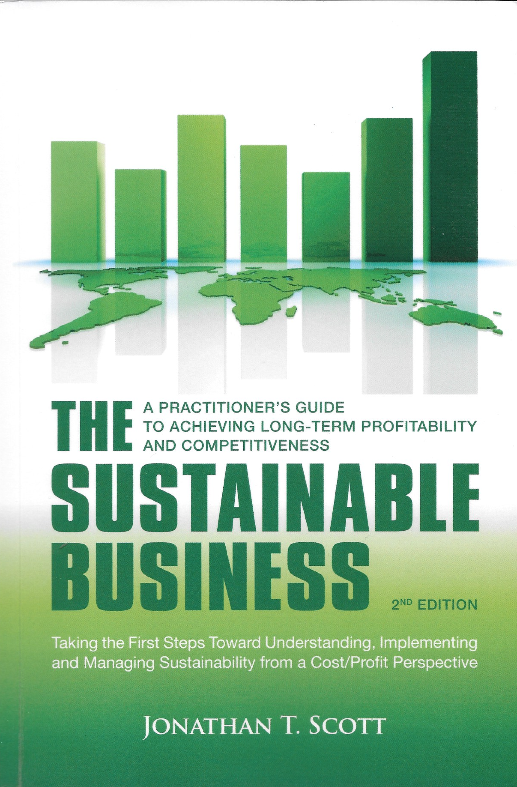The one sentence summary
Sustainable businesses are more competitive and profitable in the long term.
WHAT THE BOOK SAYS

- Sustainability is a catchall concept that can be as difficult to comprehend as it is to define. It involves processes and acts of long-term continuance – causing or allowing something to continue over a period of time. By definition, unsustainable business has to come to an end at some point.
- It is nothing specifically to do with being green – it includes legal, financial, economic, industrial, social, material and behavioural elements. Every business speciality has its own language, and every one of them thinks that its goals supersede the goals of others.
- There are 7 Ps in sustainability:
- Preparation: the reformer needs to fully recognise what they are up against when trying to implement change.
- Preservation: internal means measuring; external means keeping ahead of laws.
- Processes: business models and approaches that match a business with customer demands.
- People: employees, stakeholders and the world community.
- Place: how well buildings function.
- Product: goods and services that are free from unnecessary waste and toxins.
- Production: the physical processes used to transform raw materials into finished goods.
- All of this needs to be led by a clear vision, backed by a mission, and broken down into achievable objectives, with clear strategies to achieve them.
- Sustainability is not about being independent. It’s about being interdependent.
WHAT’S GOOD ABOUT IT
- In a lake economy, goods and materials are used as long as possible to promote sustainability. In a river economy, raw materials, manpower and energy flow continuously along an insatiable manufacturing stream, are used for a short period, and then end up as landfill.
- Ten good reasons for a business to become sustainable include volatile energy prices, increases in raw material costs, increases in waste and disposal costs, changes in waste legislation, increases in environmental laws, changes in customer demands and expectations, competitive advantage, transparency issues, acquisition, retention and motivation of astute employees, and the cost of procrastination.
- Waste is defined as not obtaining 100% from purchases and investments. That usually means over-production, waiting, moving items needlessly (unnecessary motion), over-processing, too much inventory, defects, employee resistance, and under-utilising people. Lean thinking addresses this by eliminating waste, minimizing inventory, doing everything right first time, partnering with suppliers and creating a culture of continuous improvement.
- Product waste can be reduced by carefully designing them in the first place to be reused in a closed-loop system, making them easy to disassemble after use, reducing their hazardous make up, reducing their energy needs, using cleaner technology, rewarding customers for returning them after use, and reducing packaging requirements.
- Resistance to change will usually include lack of awareness, waste acceptance, the cost myth (“How much is this going to cost?”), the hassle factor, scepticism or obstinacy, social loafing (“Someone else can do it.”), the ‘let’s wait and see’ attitude, the solutions are too simple (“Turn the lights out more often?”), and “We’re already doings as much as we can.”
- 73% of companies that adopt sustainable policies regularly outperform their industry peers.
- Greenwashing is rife. 26% of companies have no proof to back up their claims. 11% of labelling is vague. 4% of green claims are irrelevant. 1% even make claims to distract customers from deficiencies (such as ‘organically grown tobacco’), and 1% are out-and-out lies.
WHAT YOU HAVE TO WATCH
- Not much. This is the practical end of true sustainability – not a lazy default to ‘becoming more green.’
